When my love for photography first began, shopping for a new lens was somewhat intimidating. There were so many numbers! I had no idea how to decipher it all. So, today’s post will dig a little deeper into lens jargon. You’ll probably learn more than you care to know about everything written on the exterior of a lens. Keep in mind when reading that some manufacturers include more information than others, and even some series of lenses within the same manufacturer may have more or less information.
*This post contains affiliate links. Thanks in advance for supporting Click it Up a Notch.
When looking at a lens, everything short of reviews can be written on the exterior. It’s usually a mouthful! Let’s start with a lens by Nikon and break it down to determine what all of it means. Then we will move on to other specifics. Meet one of my favorite lenses, the Nikon AF-S Micro Nikkor 105mm 1:2.8 G ED. This is from the newest series of lenses from Nikon, the G series. This lens includes a lot of information just in the name of the lens.
Brand
Nikon is the brand name. There are many of lenses available to fit your camera body. However, “first party” lenses will only work on camera bodies of their own brand. For example, Nikon and Canon are first party lenses. There are other companies that make lenses with different mounts that will fit many camera brands and models. Lenses that are not the same brand as your camera are called “third party” lenses. A few popular third party brands include Tamron, Tokina, and Sigma.
Motor in the Lens
AF-S is the newest version of the lenses in the Nikon family. AF-S mean AF (autofocus), S (Silent Wave Motor). This means that the lens has a motor built inside that focuses the lens. Some consumer grade cameras by Nikon require an AF-S lens to autofocus on the camera body. Canon lenses have always had motors in the lenses.
Type of Lens
Micro is the second hint as to what this lens can be used for. Not all lenses describe exactly what they do in their name, in fact, most do not, but by the end of our four part series, you’ll be able to determine for yourself what you might use any lens you come across for. The Nikon 105mm f/2.8 is a micro or macro lens. You’ll learn more about the specifics of each type of lens in Part 5 of our Lens Series by Kelly Garvey.
Type of Glass
used in the lens can be written on the exterior of the lens. In this case, the letters ED mean “Extra Low Dispersion”. These terms will all be different depending upon the manufacturer and will not be written on every lens. Just remember that the numbers and symbols on the lens really mean something. They aren’t just there to make it look fancy! Canon uses the letter “L” in its lenses to distinguish its “Extra Low Dispersion” glass lenses. The L series of Canon lenses also has the distinguishable red ring around the lens.
Size of Filter
The null sign on the lens next to a number will tell you the screw on filter size for your lens. This image shows a null 58, which means this Nikon 85mm f/1.8D AF lens would need a 58mm filter.
Are you snoozing yet???? Sanford is!
Focal Length
A number followed by “mm” refers to the focal length of the lens. The focal length in combination with the aperture will most likely be the most important information to know when looking for lenses. When looking at a prime lens, like the Nikon 105mm 2.8, there is only one focal length, 105mm. Zooms have a range. For example, my Tamron AF 28-75mm f/2.8 can zoom between 28mm and 78mm.
Aperture
The aperture is written on the lens as a ratio. As on the Nikon 105mm f/2.8G, the aperture value is 2.8. This number refers to how much light will be let into the camera at a given shutter speed. The smaller the aperture value, the more light that will be let in or “faster” the lens will be at a that shutter speed. When shopping for a lens online, the aperture is usually written as f/2.8. “F” refers to the f/stop or f/value, which is the same as aperture value.
Just like zooms, there can also be a range in the aperture value. This is called a variable aperture lens. Variable aperture means that as you zoom your lens in or out, the aperture value can change depending on the maximum aperture value for a given focal length. A lot of “kit lenses” seem to be variable aperture lenses. Because the aperture value can change as you zoom in and out, these lenses tend to be more difficult to learn with as a beginner photographer. Fixed aperture lenses on the other hand, the aperture value never changes unless you change it in camera or manually change it on your lens.
Wake UP! We are almost finished, I promise!
Other Details
There is even more information on your lens that may not need to know in order to rock your camera, but, it is there for a reason and can be useful.
Distance Index scale and Index
This is a scale that can be used to determine approximately what distance from the camera is in focus. This is a tool that can be used when manually focusing. Most photographers trust their eye while looking through the viewfinder, rather than using the distance index tool. Also on this same scale the depth of field (DOF) can be approximated by knowing the distance to your subject and what aperture you are shooting with. There are many DOF apps and calculators for our phones and that can be used more accurately.
Infrared Index Scale
This is a feature found on Canon lenses. This scale is used when shooting monochrome infrared film.
More About Compatibility
And of course before you take the leap and buy a new lens, you should check to make sure the lens is compatible with your camera. This information can be found on your camera manufacturer’s website.
You should check the mount type. With Nikon, this shouldn’t be a problem. The SLRs have had the same mount since 1959! But while the lens may mount on any Nikon camera, it may not be fully compatible. The type of camera sensor should be also considered. Nikon has DX lenses and FX lenses. DX lenses are for crop sensors, FX are for full frame sensors.
Canon has two different mounts. The EF lens mount and the EF-S lens mount. The type of sensor in the camera will determine the mount lens that can be used. The EF-S lenses were made to used with Canon APS-C sized sensors (crop) and the EF lens is for full frame sensors.
If you are totally and utterly confused, hang in there for the following month as we dig a little deeper into lenses. Next week, Jennifer Bacher will tell us about some popular lenses to buy and why!
Read the whole series: Everything you want to know about camera lenses
Part 1: Understanding the writing on the lens
Part 2: What lens should I buy next?
Part 3: Our Favorite Lenses
Part 4: Lens on crop vs. full frame sensor
Part 5: Comparing different lenses
Part 6: 50mm 1.8 vs 1.4

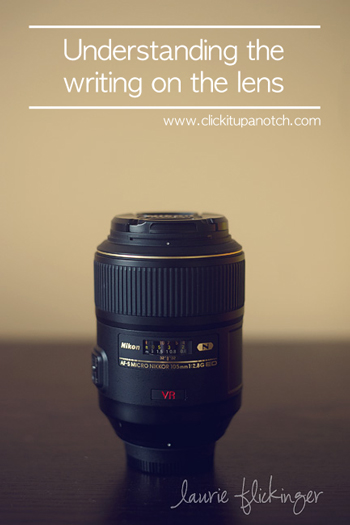
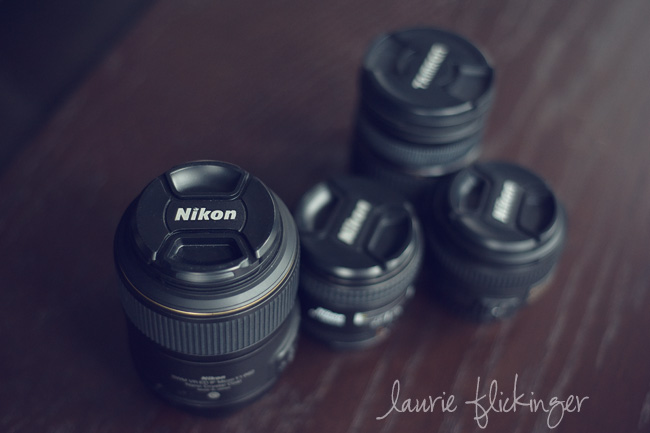
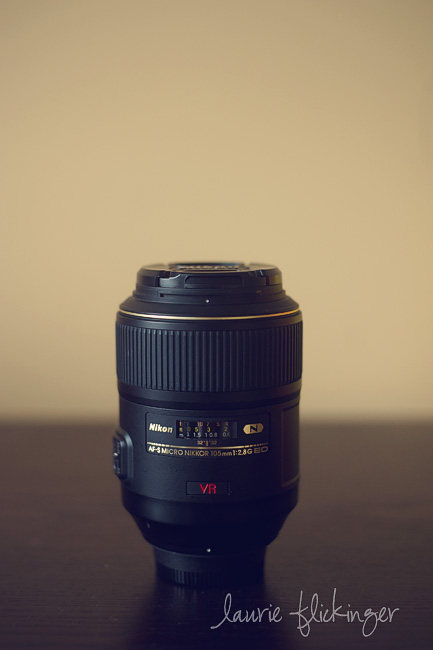
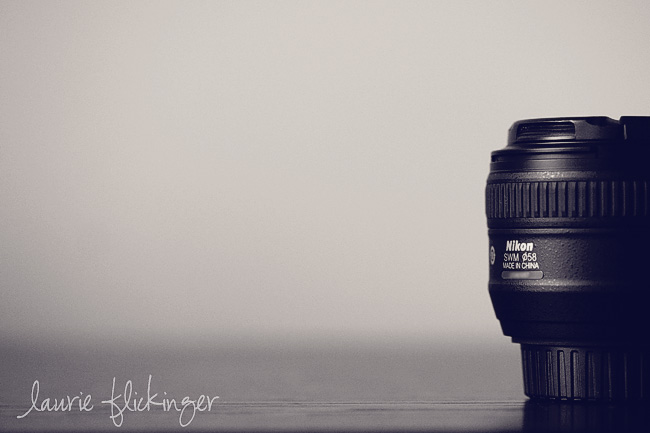
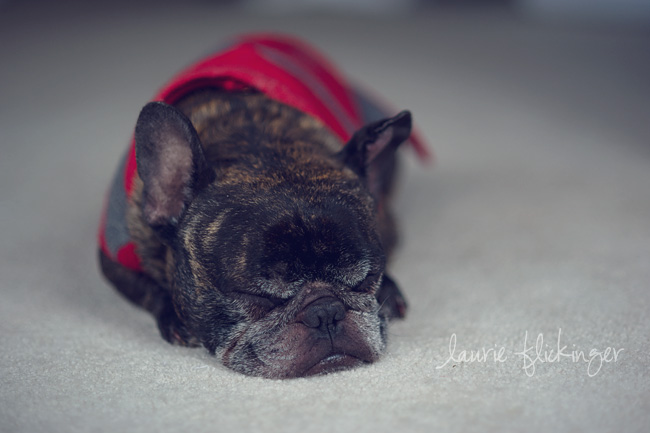







Great article… Looking forward to many more lens articles. I just bought the 18-200mm canon lens and am so excited about it. My next lens will be the 50mm f1.4. All very new to me but I’m soaking every bit of information I can about cameras, lenses, photog… etc. And I LOVE Sanford. He’s so cute! Is that a frenchie… also next on my list , lol
Awesome! Getting new gear is so much fun! Yes, Sanford is a Frenchie. He is a great dog! Very sweet breed!
This is a great article Laurie with a lot of helpful information! Way to go girl!
Thanks girl ;)
Great article Laurie!!! So much great information! Love the shots of Sanford.
Great job Laurie! I can tell you spent a ton of time on this post. It’s loaded with so much information! When I grow up I want to be you.
I was just telling my wife I need another lens…..then I looked at the website and……..guess what the topic is about. :)
Guess it was made to be. lol
I would take that as a sign for sure :)
Never thoguht I would ever read anything about camera lenses but I started with your first sentence then the second and at the end I read the hole post :D you just put it together so well ;)
Thank you! I was worried it that it was too long, but there is just so much information!
This is just what I need, as I have been saving for over a year to buy a new lens and I am getting closer.
Look for next week’s post by Jen Bacher! It’s going to be a good one!
I’ve just been thinking about lenses and what to buy. I’m saving my pennies for a couple different ones and am scratching my head over the macro/micro ones. I know they are mostly based on personal preference, but I’m such a novice I have no idea what to even look at. I love macro photography (did it a lot with my point and shoot) and seeing the world up close. My camera is a D7000 and I’ve had it for under a year so I am still learning a lot about it! :)
Hi Emily! When I bought my macro, I considered what other focal lengths I already had because a macro lens can also be used for for portraits. I already had a 50mm and an 85mm, so it made sense to me to get a longer focal length., so I went with the 105mm. That is just one thing to consider. The other would be how close you actually want to be. A 105mm would be like a 150ish mm lens on a crop sensor I believe. That might be too long to use for portraits, but would get you really close for macro! Look for next week’s post :)
Thanks, I am looking forward to your post! :) The only lens I have right now is the one that came with my camera (18mm – 105mm). I have been saving up for the 55mm – 300mm with vibration reduction.
Great post! I learned a few things. I didn’t know about the filter size info on the lens. I am wondering now though…I had always assumed my Nikon lenses would fit my camera if I upgraded from the cropped D5000 I have to a full frame, say D700. I read this post to mean that the lenses are not made that way? Would I have to invest in new lenses too? I currently have the 18-55 mm f/3.5-5/6 AF-S DX kit lens, the 55-300 mm f4.5-5.6 AF-S DX and a 50 mm f/1.4 AF-S G.
Thanks for the informative post!
If you upgrade from a DX body to an FX body, you’ll will probably want to upgrade those dx lenses too. The 50mm 1.4 is fully compatible with the D700. The other dx lenses are made for crop bodies. While you will be able to use them on an FX body, the mount will work, you’ll be able to take pictures,…they will act essentially in the same way as on a full frame body as they do on a crop body and you may get more vignetting. The angle of view of the dx lenses lens will not cover the larger sensor on the fx bodies and the extra area not being used will be wasted. It will crop the FX 12.1 megapixels to around 5 megapixels. So, if you plan on upgrading, keep in mind which lenses will be compatible with your “dream” body. Hope this helps!
This was so well written! I never realized about the null sign…kind of passed that over! I always just looked at the back of the lens cap for the number size (but then if I had lost the lens cap I was screwed & had to google it) – you taught me! xoxo
Can you please explain more about lens compabatiblity? You said “Nikon has DX lenses and FX lenses. DX lenses are for crop sensors, FX are for full frame sensors.” What is this mean? My Nikon D5200 says it has a F mount & a DX format but can you explain what this means? I’m a newbie & it’s confusing!
The sensors are different sizes on Dx (cropped sensor–smaller) and FX (full frame–larger) cameras. That’s the part of the camera that is the “film” off a digital camera. Nikon makes lenses that fit either the crop sensor or both. F mount lenses are the type of mount (how it screws on). The fx or dx determines how much of the sensor will be exposed. Any lens should work fine with your camera. Full frames cameras are not compatible with DX lenses…there will be excessive vignetting bc the sensor is larger than the space allowed to be seen by the lens. So, in a nutshell, bc you are shooting with a dx camera, dx lenses will work fine. No need to worry about that. The one thing you should consider is whether or not your camera needs lenses with a motor built into the lens. Nikon D series are older lenses (still great though!) that will likely not be (fully) compatible with your camera. While it will fit onto the camera and work, it will need to be manually focused. So look for G series lenses. Ex: 50mm f/1.8 G. The G or D will be written after the f/stop.
Hope this helps! I’ve noticed some companies will say “not compatible with …..) on the D series lenses. Have fun shopping!
Hi there! This is kind of off topic but I need some advice from
an established blog. Is it difficult to set up your own blog?
I’m not very techincal but I can figure things out
pretty quick. I’m thinking about making my own but I’m not sure where to start.
Do you have any tips or suggestions? Many thanks
This is very interesting, You are a very skilled
blogger. I’ve joined your feed and look forward to seeking more of your excellent post.
Also, I’ve shared your web site in my social networks!
Hello to every one, it’s genuinely a good for me
to go to see this web site, it contains useful Information.
Hi Laurie – another great article – I really like your writing style. Bags of info which I am trying to put into practice! Although I am a Canon shooter your advice is still very relevant to me. I have passed on ‘Finding Finnley’s Voice’ – darling little chap he us too – to a friend who has a tiny wee boy with special needs. Glad you enjoyed your trip. Kit
Yes! Finally someone writes about injury attorney in dallas.
Thanks once again for the great info…..I love getting all this education!!!
I’m having trouble with getting this right, but I’m learning…thanks for sharing!
Hi.. Im a beginner photographer. Im interested in purchasing the Canon 50 mm 1.8 lens. I have a Canon EOS rebel slr camera. However, Im hearing that the canon 50 mm 1.8 USM would be better but as a beginner at this moment I could afford the Canon 50 mm 1.8 lens. We it be best to purchase this lens or wait and save a little more money to purchase the USM or go ahead with the prime lens without the USM? Please assist.
Greatly appreciate your recommendation
Hi mike! I shoot Nikon, and I’m not completely familiar with the terms of the Canon lenses….that said, the more you pay, the better the lens in photography. Did you mean between the 1.8 and 1.4? Most people seem to upgrade to the 1.4 at some point, so it just depends on what you would rather do. I started with the cheaper lens and upgraded later on. You find a great shallow DOF with either lens and both are an upgrade from kit lenses. Hope this helps!
Thanks it was super helpfull… ñ_ñ
Thank you for the tip on the DOF app. I never thought to look. This will help me a lot with playing with different lens
I was sorry to see that Sonys were left out in your discussion. I know they aren’t as popular as the Nikon or Cannon, but they are a great camera, in my opinion, and would have appreciated them being included.
so i have a Nikon D5500 and i want to buy the 35mm 1.8 lens..would that compatible with my camera??
Yes :)
Very very educative. Excellent. Thanks….
This is so helpful!! Thank you :)